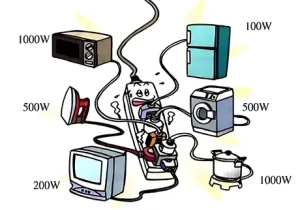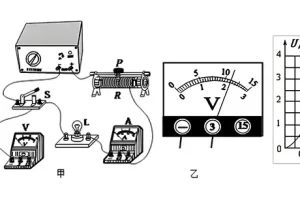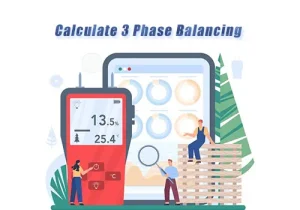
Home » Analysis on the Harm of Unbalanced Three-phase Load and Improvement Measures
Analysis on the Harm of Unbalanced Three-phase Load and Improvement Measures
◴ 2024-08-28
What happens if the 3 phase is not balanced
Load imbalance in three-phase power systems can lead to a number of issues relating to the safety and economy of power equipment. The most prominent risks of three-phase imbalance are:
1. Increased power loss of distribution transformers
Low-voltage power grid core equipment are distribution transformers, and three-phase load imbalance will increase their losses. Transformer losses are classified into two: iron loss, also known as no-load loss, and copper loss, which is termed as load loss. In cases of unbalanced conditions, changes in loads will cause increased copper loss. The explicit consequences are:
● Winding overheating: The rate of aging of insulation material increases, and insulation performance decreases.
● Shortened life: For every 8°C increase in temperature, the transformer service life may be reduced to half.
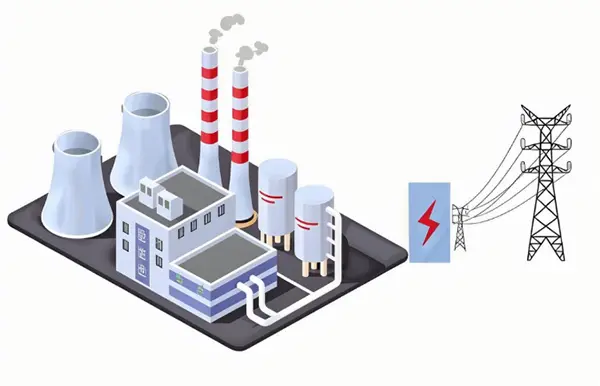
2. Reduced output of distribution transformers
The distribution transformers are designed on load balancing principle. Three phase unbalance will result in a light load on one of the phases and surplus capacity on another. This will be reflected in the maximum allowed output of the transformer that can cause the following problems:
● It also reduces the output capacity. The output capacity cannot be produced at rated value and also decrease spare capacity.
● Overload risk: The transformer gets overheated due to possible overload conditions which may trigger burning.
3. Generation of zero sequence current
For an unbalanced three-phase load, the transformer produces zero-sequence current, whose magnitude is proportional to the level of imbalance. The presence of zero-sequence current will produce the following issues:
Zero sequence flux generation: The zero sequence flux that is produced in the iron core of the transformer increases and causes local temperature rise.
Insulation aging: Overheating will hasten the ageing of the winding insulation material. As such, it increases the reduction in the equipment’s lifespan.
4.Increase power loss in line
In a three-phase four-wire power supply system, impedance leads to creating the loss of power whenever the current flows through the line. That loss is proportional to the square of current. Whenever there is any unbalance in the three-phase load, the current starts flowing to the neutral line; it further enhances the line loss in the power grid. The more is the unbalanced level for the current to flow, the greater will be the amount of loss in the line.
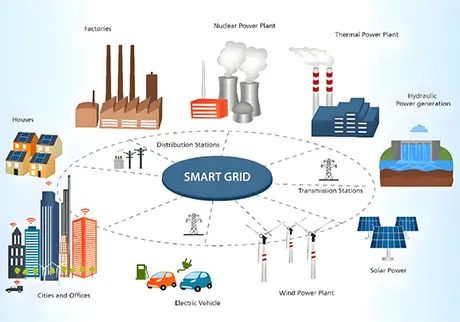
5. Influence the safe operation of electrical equipment
Unbalanced phase voltage leads to several problems such as:
● Neutral point drift: The heavily loaded phase voltage decreases and the lightly loaded phase increases leading to unstable operations of equipment.
● Damage to equipment: voltage imbalance can damage equipment, more so the phase that has a high voltage
The phenomenon of imbalance seriously threatens the safety and stability of electrical equipment.
6. Reduces motor efficiency
● The balanced three-phase load will create unbalanced voltage input at the motor end. The effect of negative sequence voltage makes the motor operate like brakes, which have the effects of the following.
● Inefficiency: The lower power output at the motor end resulting from the lower overall efficiency of the motor.
● Quicker temperature rise and reactive power loss: The rise in temperature as well as the reactive power loss of the motor increase with the three-phase unbalanced voltage that can cause damage to the equipments without any hassle.
● Therefore, it becomes economically unsound for the motor along with dangerous to be used when the three-phase voltages persist imbalanced.
What are the ways of improving three-phase imbalance?
1.The three-phase loads should be given appropriate distribution
Electric power workers should collect the load data very carefully to record them for the predicting of the state of the load power. In the four-wire three-phase, especially low voltage, after the using of balancing equipment, the reactive compensation ones could appropriately change the transformed unbalanced currents. Furthermore, in a different condition the wiring method of the current moment changes appropriately, according to which this method, too, is one appropriate measure for the distribution of three-phase load reasonably.
2. Control unbalanced current
Any type of unbalanced load except the grounded one can be connected in parallel with some resistors and capacitors, based on the compensation principle of the unbalanced current. The following principles must guide control of unbalanced current:
● Power factor compensation and regulation of imbalance on three-phase current.
● To avoid overcompensation, full capacitive control should be embraced.
● Compenstation amount should also be adjusted in time.
● Reduced the number of switching devices and compensation equipment to ensure maximum management throughout the day.
3. Routine checking and adjustment of three-phase loads
Regular testing of three-phase loads is necessary. According to national standards, test results should be documented and checked to promptly identify and calibrate imbalances. In parts where no faults exist, vigilance is also required. Once tested, the data have to be sorted and fed into the system to allow inference into necessary adjustments and possibilities for technical application.
Summary
Three-phase load imbalance has a significant impact on the power system. It not only increases the energy consumption of distribution transformers and lines but also causes overheating of equipment and reduces service life, which would affect safe operation. Motor efficiency will also be severely affected. Therefore, effective measures should be taken to prevent three-phase load imbalance.
The use of a three-phase unbalanced voltage stabilizer is an effective solution. Meanwhile, it can measure voltage in real time to enable balanced load on all three phases and subsequently reduces consumption of energy plus efficiency of all the equipments. Meanwhile, the reasonableness with loading unbalanced current can be accompanied by the check to prevent this phenomenon as well. Last but not the least, the three phase voltage stabilizer which accompanies all above improvement measures has a significant role to perform to optimize and stabilize power system.

